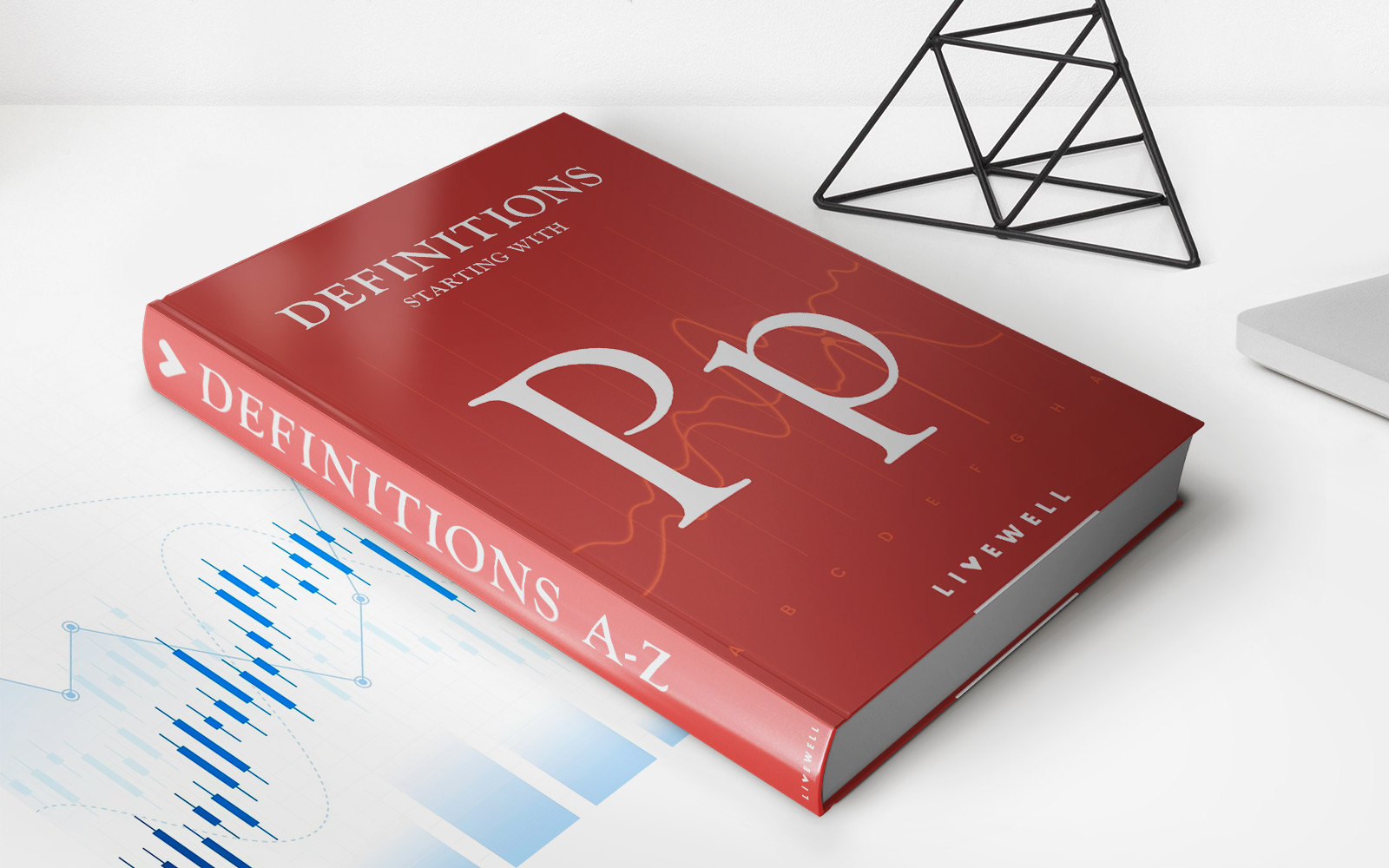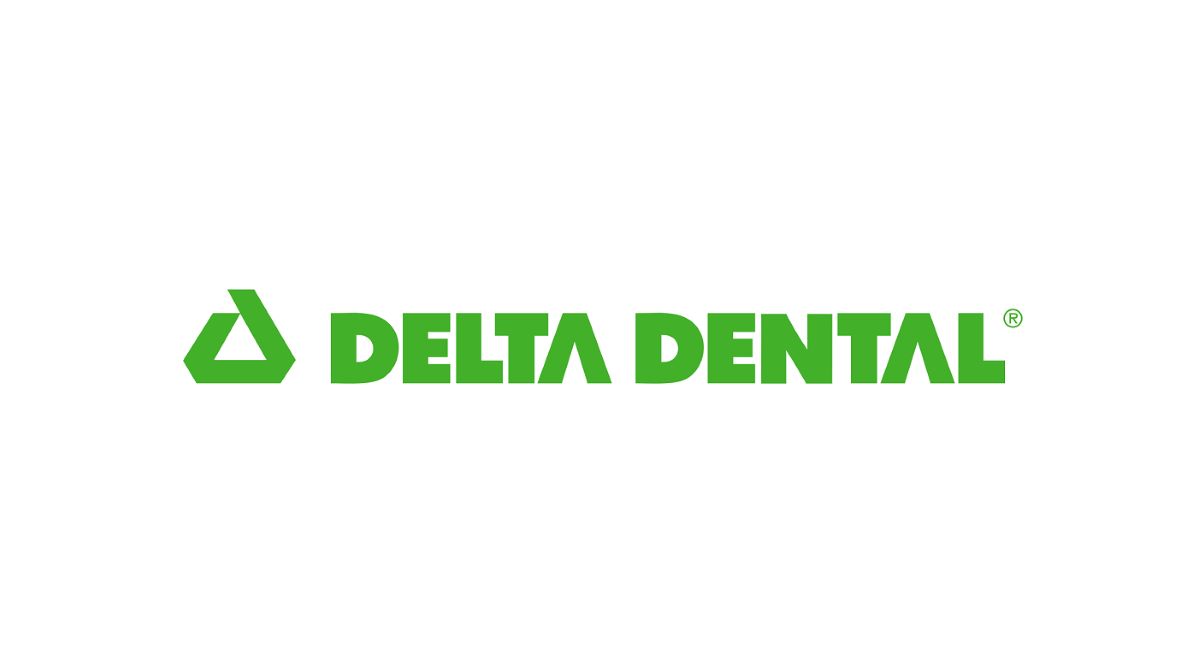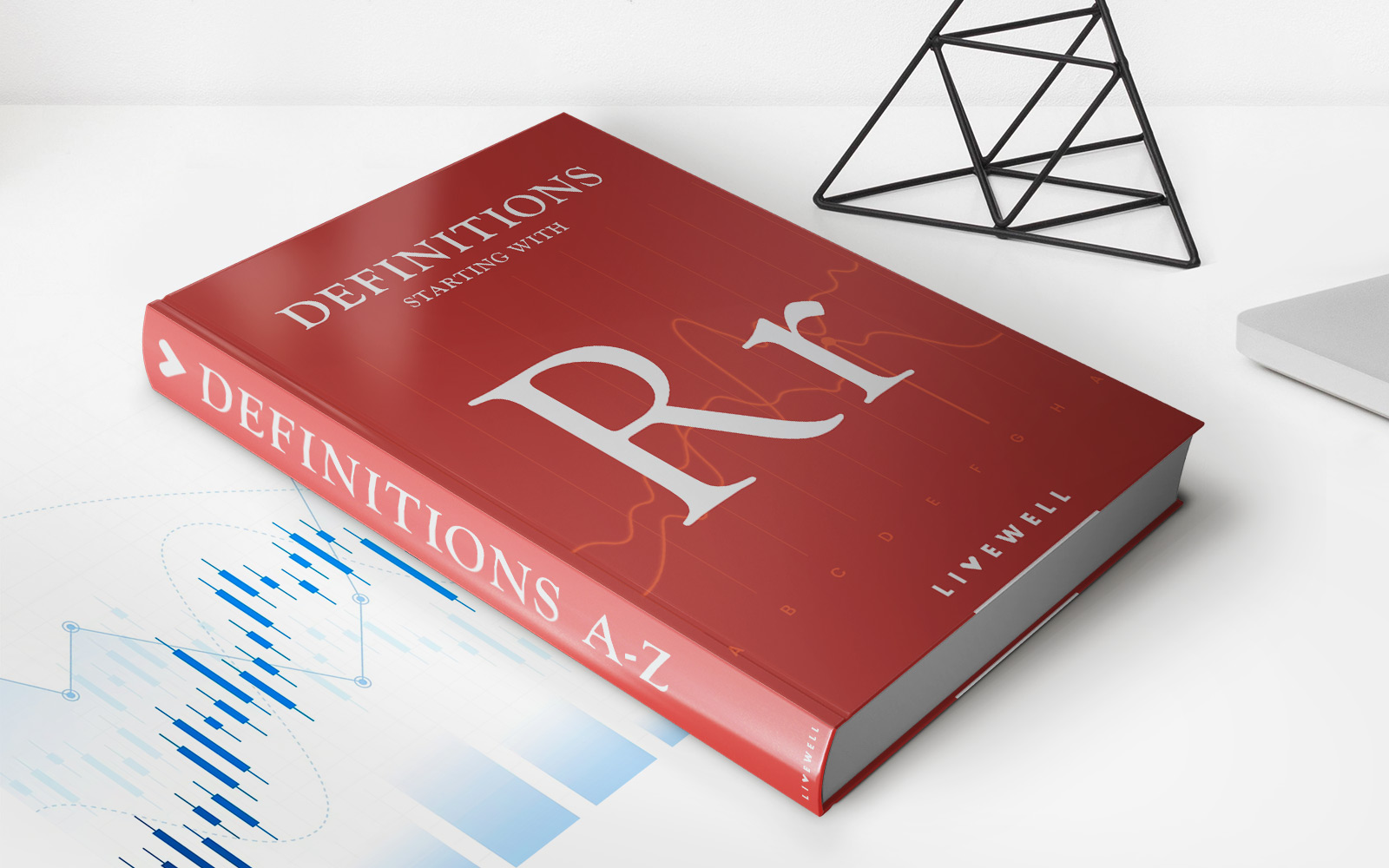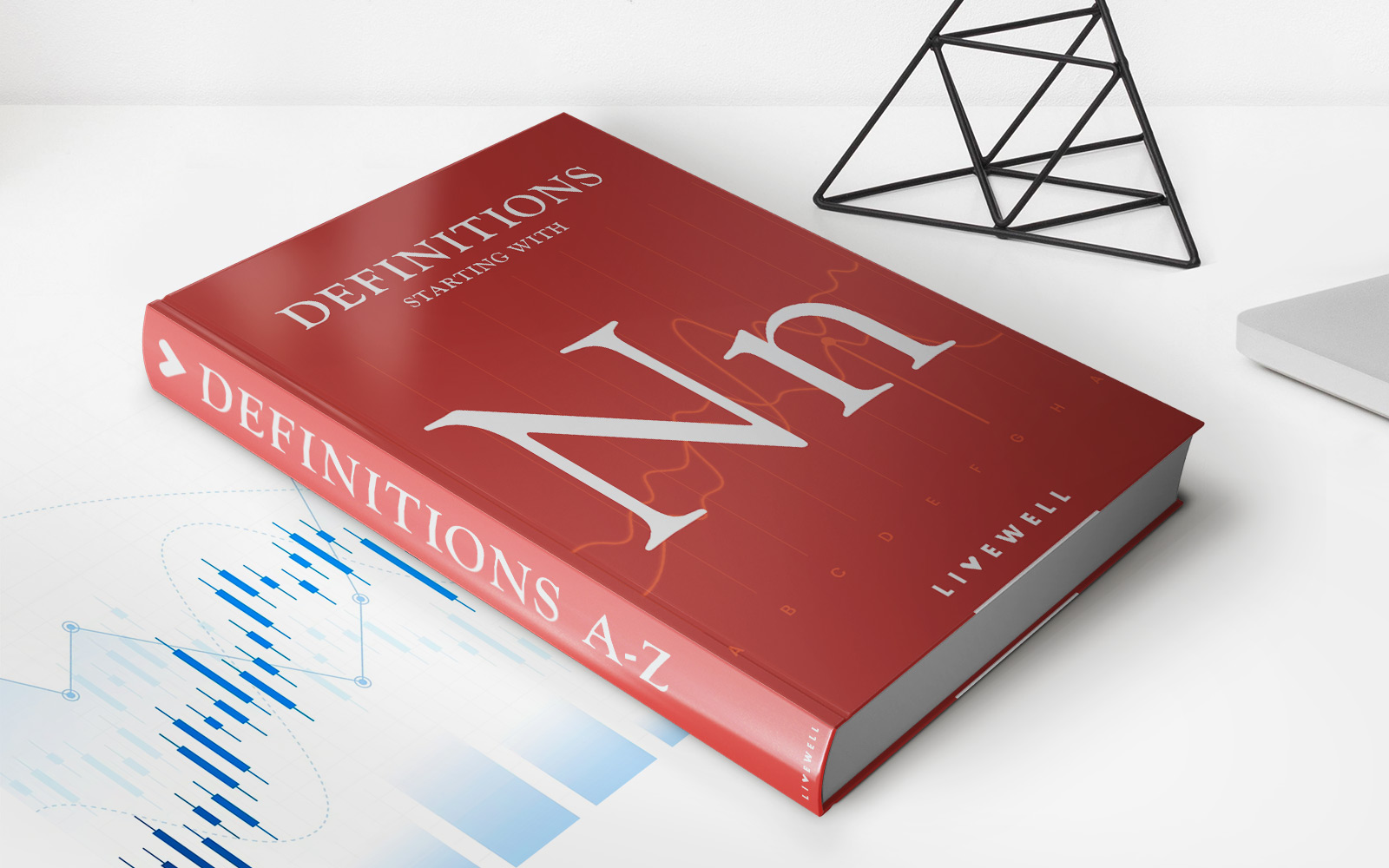Home>Finance>How Is Long-Term Disability Insurance Different From Health Insurance?


Finance
How Is Long-Term Disability Insurance Different From Health Insurance?
Modified: December 30, 2023
Learn how long-term disability insurance differs from health insurance and why understanding this distinction is essential for your financial well-being.
(Many of the links in this article redirect to a specific reviewed product. Your purchase of these products through affiliate links helps to generate commission for LiveWell, at no extra cost. Learn more)
Table of Contents
Introduction
When it comes to protecting our financial well-being and ensuring our stability in the face of unforeseen circumstances, insurance plays a crucial role. Two common types of insurance that individuals often consider are long-term disability insurance and health insurance. While both aim to provide coverage for medical expenses, they serve different purposes and offer varying benefits. Understanding the differences between these two types of insurance can help individuals make informed decisions about how to best protect their financial and physical well-being.
Long-term disability insurance is designed to provide financial protection in the event that an individual becomes disabled and is unable to work for an extended period of time. Health insurance, on the other hand, focuses on providing coverage for medical expenses, such as doctor visits, hospital stays, and prescription medications.
This article will discuss the key differences between long-term disability insurance and health insurance, including the coverage and benefits they offer, their purposes and scopes, the duration of coverage, eligibility and enrollment processes, cost and premium considerations, the claims process, limitations and exclusions, and coordination with other benefits.
By understanding the distinctions between these two types of insurance, individuals can make informed choices when it comes to selecting the most appropriate coverage for their specific needs. This knowledge can empower individuals to safeguard their financial health and ensure that they have adequate protection in the face of unexpected events.
Definition of Long-Term Disability Insurance
Long-term disability insurance is a type of insurance policy that provides income replacement in the event that an individual becomes disabled and is unable to work for an extended period of time. It is designed to offer financial protection for individuals who rely on their income to meet their daily needs and support their lifestyle.
Unlike short-term disability insurance, which typically provides coverage for a limited duration, long-term disability insurance kicks in after a waiting period, usually 90 days, and provides coverage for an extended period, often until the individual reaches retirement age or is able to return to work.
The definition of disability can vary depending on the specific policy. In general, it refers to a condition that prevents an individual from performing the duties of their occupation or any gainful employment for which they are reasonably suited by education, training, or experience.
Long-term disability insurance generally provides a percentage of the individual’s pre-disability income, typically ranging from 50% to 70%, although the exact amount may vary depending on the terms of the policy. This income replacement can help individuals cover their ongoing living expenses, such as mortgage or rent payments, utility bills, groceries, and other essential needs, while they are unable to work due to disability.
It is important to note that long-term disability insurance does not cover every type of disability. Certain conditions or disabilities may be excluded from coverage, such as pre-existing conditions or disabilities resulting from self-inflicted injuries or illegal activities. Additionally, some policies may have specific limitations on coverage for certain types of disabilities, such as mental health disorders.
Long-term disability insurance provides individuals with peace of mind, knowing that they have a financial safety net in place in the event of a long-term disability. By providing income replacement, it can help individuals maintain their financial stability, protect their savings, and continue to meet their financial obligations even when they are unable to work.
Definition of Health Insurance
Health insurance is a type of insurance coverage that helps individuals manage and cover the costs associated with medical expenses. It is designed to provide financial protection in case of illnesses, injuries, or other healthcare needs. Health insurance policies may vary in terms of coverage, benefits, and costs, depending on the specific plan and insurance provider.
Health insurance typically covers a wide range of medical services, including doctor visits, hospital stays, surgeries, laboratory tests, prescription medications, and preventive screenings. The extent of coverage may depend on the specific plan, and individuals may need to fulfill certain criteria or receive care from in-network providers to receive full benefits.
There are different types of health insurance plans, including employer-sponsored plans, government-sponsored plans such as Medicaid or Medicare, and individual or family plans that individuals can purchase on their own.
Health insurance plans often operate on a network system, which means that certain doctors, hospitals, and healthcare providers are included in the network and offer discounted rates to individuals with the insurance plan. Going to an out-of-network provider may result in higher costs or less coverage, depending on the specific plan.
Health insurance plans may also include additional benefits such as prescription drug coverage, dental and vision care, mental health services, and wellness programs. However, the specific benefits and coverage may vary depending on the plan and insurance provider.
Premiums, deductibles, and copayments are important aspects of health insurance. The premium is the amount individuals pay periodically, usually monthly, to maintain their coverage. Deductibles are the amount individuals must pay out of pocket before the insurance coverage kicks in, while copayments are fixed amounts individuals pay at the time of service for a particular medical service or prescription.
Health insurance provides individuals with access to necessary medical care, protects against high medical expenses, and promotes preventive care and early detection of illnesses. It plays a vital role in ensuring individuals can receive the medical attention they need without incurring significant financial burden.
Coverage and Benefits
Long-term disability insurance and health insurance differ significantly in terms of the coverage and benefits they provide.
Long-term disability insurance focuses on providing income replacement in the event that an individual becomes disabled and is unable to work. The coverage typically includes a percentage of the individual’s pre-disability income, helping to cover ongoing living expenses during the disability period. This income replacement can provide a sense of financial security and help individuals maintain their standard of living.
On the other hand, health insurance primarily focuses on providing coverage for medical expenses. This includes doctor visits, hospital stays, surgeries, laboratory tests, prescription medications, and preventive care services. Health insurance helps to offset the costs associated with healthcare, making it more accessible and affordable for individuals and their families.
While long-term disability insurance does not cover medical expenses directly, it can indirectly benefit individuals by replacing their lost income, allowing them to manage their medical expenses and maintain their healthcare coverage.
Both long-term disability insurance and health insurance play important roles in providing necessary coverage and benefits to individuals. Long-term disability insurance protects an individual’s financial well-being by replacing lost income, while health insurance helps individuals manage their medical expenses and access necessary healthcare services.
It is important to carefully review the terms and conditions of both types of insurance to understand the specific coverage and benefits offered by each policy. This will help individuals make informed decisions on how to best protect their financial and physical well-being.
Purpose and Scope
The purpose and scope of long-term disability insurance and health insurance differ significantly, addressing different aspects of an individual’s well-being.
The primary purpose of long-term disability insurance is to provide financial protection in the event that an individual becomes disabled and is unable to work. It aims to replace the individual’s lost income and helps maintain their financial stability during the period of disability. The scope of long-term disability insurance is focused on income replacement and ensuring individuals can meet their ongoing living expenses while they are disabled.
On the other hand, the primary purpose of health insurance is to provide coverage for medical expenses. It aims to protect individuals from the high costs of healthcare services, including doctor visits, hospital stays, surgeries, medications, and preventive care. The scope of health insurance is broader and encompasses a wide range of medical services to ensure individuals have access to necessary healthcare without incurring significant financial burden.
Long-term disability insurance addresses the financial aspect of an individual’s well-being, protecting their income and helping to maintain their standard of living during a period of disability. It provides individuals with the peace of mind that their financial needs will be met, even if they are unable to work due to a disability.
Health insurance, on the other hand, addresses the medical aspect of an individual’s well-being by providing coverage for essential healthcare services. It aims to ensure that individuals can access the medical care they need without incurring exorbitant costs, thus promoting their overall health and well-being.
While long-term disability insurance and health insurance have different purposes and scopes, they are both crucial in protecting individuals from potential financial hardship and ensuring they have access to necessary resources during challenging times. It is important for individuals to carefully consider and evaluate their needs to determine the appropriate coverage in order to protect both their financial and physical well-being.
Duration of Coverage
The duration of coverage is an important aspect to consider when comparing long-term disability insurance and health insurance.
Long-term disability insurance provides coverage for an extended period of time, typically until the individual reaches retirement age or is able to return to work. The duration of coverage is based on the specific terms of the policy and can vary depending on the insurance provider. This extended coverage is designed to offer financial protection to individuals in the event of a long-term disability that prevents them from working for an extended period.
Health insurance, on the other hand, typically provides coverage on a year-to-year basis. Individuals need to renew their health insurance policy annually to continue receiving coverage. The duration of coverage for health insurance is subject to the terms of the specific plan and the insurance provider’s guidelines.
It is important to note that health insurance coverage can also be influenced by life events such as changing jobs or becoming eligible for government-sponsored plans like Medicare or Medicaid. These events may require individuals to update or change their health insurance coverage accordingly.
When considering these two types of insurance, individuals should carefully review the duration of coverage provided by each policy. Long-term disability insurance offers coverage for an extended period, specifically focused on income replacement during a disability. Health insurance, on the other hand, provides coverage on a year-to-year basis, ensuring individuals have access to necessary medical services throughout the coverage period.
By understanding the duration of coverage, individuals can make informed decisions and choose the insurance coverage that best suits their needs, offering them the necessary protection for both their financial and medical well-being during the specified time frames.
Eligibility and Enrollment
Eligibility and enrollment processes for long-term disability insurance and health insurance may vary, so it’s important to understand the requirements and procedures for each.
For long-term disability insurance, eligibility is typically based on factors such as age, occupation, and income. Insurance providers may set specific criteria for eligibility, and individuals may need to undergo medical underwriting, which involves providing information about their health and medical history. The underwriting process helps determine the individual’s risk profile and may impact the cost of premiums. Most often, long-term disability insurance is obtained through an employer-sponsored plan, although individuals can also purchase individual policies.
In contrast, health insurance eligibility and enrollment can vary depending on the type of plan. Employer-sponsored plans typically offer coverage to full-time employees, with some employers extending coverage to part-time employees as well. Government-sponsored health insurance programs like Medicaid and Medicare have specific eligibility requirements based on factors such as age, income, and disability status. Individual or family health insurance plans are available for purchase directly from insurance companies or through government marketplaces.
Enrollment processes for long-term disability insurance and health insurance differ as well. Long-term disability insurance is often part of an employer’s benefits package, and employees typically enroll during their initial onboarding process or during specified enrollment periods. With health insurance, enrollment periods can vary depending on the type of plan. Employer-sponsored plans usually have a defined open enrollment period each year, during which employees can enroll or make changes to their coverage. Government-sponsored plans and marketplace plans often have specific enrollment periods, but may also allow for special enrollment periods in certain circumstances, such as losing previous coverage or experiencing major life events.
It is essential for individuals to review the eligibility requirements and enrollment procedures for both long-term disability insurance and health insurance. This will help them understand their options and ensure they meet the necessary criteria to obtain the desired coverage. Additionally, staying informed about enrollment periods is crucial to ensure timely access to insurance coverage.
Cost and Premiums
Understanding the cost and premiums associated with long-term disability insurance and health insurance is crucial when considering insurance coverage.
The cost of long-term disability insurance is typically determined by several factors, including the individual’s age, occupation, income, and the terms of the policy. Insurance providers assess the risk of disability based on these factors and calculate premiums accordingly. The premiums for long-term disability insurance are typically paid on a monthly or annual basis, and the amount can vary significantly depending on the coverage amount and the specific terms of the policy.
Health insurance premiums also depend on various factors, including the type of plan, the individual’s age, location, and whether the coverage is for an individual or a family. For employer-sponsored plans, premiums are often shared between the employer and the employee, with the employer contributing a portion and the employee paying the remainder. Premiums for government-sponsored plans like Medicaid and Medicare are often based on income and may have additional cost-sharing components.
In both long-term disability insurance and health insurance, it’s important to consider not only the premiums but also any deductibles, copayments, and coinsurance that may apply. Deductibles are the amount individuals must pay out of pocket before the insurance coverage kicks in. Copayments are fixed amounts individuals pay at the time of service for specific medical services or prescriptions, while coinsurance is a percentage of the cost that individuals are responsible for paying after reaching their deductible.
When comparing insurance options, individuals should carefully review the cost and premiums associated with each policy. It’s important to consider the affordability of the premiums in relation to other expenses and the overall coverage and benefits provided. Additionally, individuals should consider how different insurance plans and their associated costs align with their budget and financial goals.
By understanding the cost and premiums associated with long-term disability insurance and health insurance, individuals can make informed decisions and choose the coverage that best fits their financial situation and insurance needs.
Claims Process
The claims process for long-term disability insurance and health insurance may differ in terms of the requirements, documentation, and timeline for filing and managing claims.
For long-term disability insurance, the claims process typically begins when an individual becomes disabled and is unable to work. The policyholder or their designated representative must notify the insurance provider of their disability and initiate the claims process. The insurance provider may require the completion of claim forms, medical documentation supporting the disability, and other relevant information. These documents will help assess the validity of the claim and determine the individual’s eligibility for benefits.
Once the claim is submitted, the insurance provider will review the information provided, evaluate the disability, and make a determination on whether the claim is approved or denied. This process can involve medical examinations, consultation with medical experts, and other assessments to evaluate the extent of disability and the impact on the individual’s ability to work.
The claims process for health insurance typically begins when an individual receives medical services or fills a prescription. The healthcare provider submits a claim to the insurance company on behalf of the individual for reimbursement or payment. The claims process involves verifying the coverage, reviewing the medical services or prescriptions, and determining the amount to be covered by the insurance plan and any amounts that the individual is responsible for paying, such as deductibles, copayments, or coinsurance.
In both long-term disability insurance and health insurance, it is important to carefully follow the claims process outlined by the insurance provider. This may include submitting the necessary documentation, providing accurate and timely information, and cooperating with any requests or investigations related to the claim.
It is worth noting that the claims process for both long-term disability insurance and health insurance can vary depending on the insurance provider and the specific terms of the policy. It is advisable to review the policy documents or contact the insurance provider directly to understand the specific claims process and requirements for each type of insurance.
Understanding the claims process is essential to ensure a smooth and timely processing of claims and to maximize the benefits available under the insurance coverage. By familiarizing oneself with the requirements and procedures, individuals can effectively navigate the claims process and obtain the necessary support and reimbursement for their medical or disability-related expenses.
Limitations and Exclusions
Both long-term disability insurance and health insurance have limitations and exclusions that individuals should be aware of when considering their coverage options.
Long-term disability insurance policies often include specific limitations and exclusions regarding pre-existing conditions. A pre-existing condition refers to any medical condition that an individual had before obtaining the insurance coverage. These conditions may not be covered under the policy for a certain period of time after the coverage begins, or they may be permanently excluded from coverage. It’s important to carefully review the policy documents to understand the specific limitations and exclusions related to pre-existing conditions.
Additionally, long-term disability insurance may have exclusions for disabilities resulting from certain activities, such as self-inflicted injuries or injuries sustained during illegal activities. Mental health disorders may also have specific limitations or exclusions in some policies, so it’s important to review the terms and conditions to understand the extent of coverage for mental health-related disabilities.
Health insurance policies also have limitations and exclusions that individuals should be aware of. Common exclusions include cosmetic procedures, fertility treatments, alternative therapies, and experimental treatments. Some plans may have restrictions on coverage for certain medications, specialized treatments, or out-of-network providers. It’s crucial to review the policy details to understand the limitations and exclusions specific to the health insurance plan.
Furthermore, both long-term disability insurance and health insurance may have limitations and exclusions related to specific procedures, treatments, or services deemed to be not medically necessary or not covered under the policy. It’s important to understand these limitations and exclusions to avoid surprises when seeking coverage for specific medical needs.
By familiarizing themselves with the limitations and exclusions of their insurance coverage, individuals can make informed decisions and manage their expectations regarding the scope of coverage. It is essential to carefully review the policy documents and consult with the insurance provider or an insurance professional to fully understand the limitations, exclusions, and any potential gaps in coverage.
Coordination with Other Benefits
Coordination with other benefits is an important consideration when evaluating both long-term disability insurance and health insurance coverage.
In the case of long-term disability insurance, it is common for these policies to coordinate with other benefits that an individual may be eligible for, such as Social Security Disability Insurance (SSDI) or workers’ compensation. Coordination of benefits helps to ensure that the total benefits received do not exceed the individual’s pre-disability income or result in an overpayment. In such cases, the long-term disability insurance benefits may be reduced by the amount received from other sources of disability-related income or compensation.
Similarly, health insurance coverage can also coordinate with other benefits, such as Medicare or Medicaid. Coordination between health insurance and government-sponsored plans helps individuals access a comprehensive range of medical services and ensures that the appropriate coverage and benefits are applied according to the specific circumstances.
When coordinating benefits between different insurance policies or benefit programs, it is important to understand the coordination rules and guidelines. This may involve providing information about other benefits received, coordinating payments to avoid duplication, and understanding how the coordination affects the overall coverage and benefits received.
Coordination of benefits is designed to optimize the utilization and value of insurance coverage, ensuring that individuals receive appropriate and comprehensive support in case of disability or medical needs. By understanding the coordination process and rules, individuals can navigate the complexities of their insurance coverage and maximize their benefits without exceeding their entitlements.
If an individual is unsure about the coordination requirements and processes, it is recommended to consult with the insurance provider, an insurance professional, or a benefits counselor who can provide guidance and support in understanding the coordination rules, eligibility requirements, and the overall impact on the coverage.
By effectively coordinating benefits, individuals can ensure that their insurance coverage works seamlessly with other available benefits, providing a comprehensive safety net for their financial and healthcare needs.
Conclusion
Long-term disability insurance and health insurance are two distinct types of coverage that serve different purposes in protecting individuals’ financial and physical well-being. Understanding the differences between these two types of insurance is crucial for making informed decisions about which coverage is most appropriate for specific needs.
Long-term disability insurance offers income replacement in the event of a disability that prevents an individual from working for an extended period. It provides financial stability and security during a time of income loss, ensuring individuals can maintain their standard of living and meet ongoing living expenses.
Health insurance, on the other hand, focuses on providing coverage for medical expenses, including doctor visits, hospital stays, medications, and preventive care. Health insurance protects individuals from high healthcare costs and ensures access to necessary medical services to maintain their overall health and well-being.
Throughout this article, we’ve explored the different aspects of long-term disability insurance and health insurance, including the definitions, coverage and benefits, purposes and scopes, duration of coverage, eligibility and enrollment processes, cost and premiums, claims processes, limitations and exclusions, and coordination with other benefits.
It is important for individuals to carefully review the terms and conditions of their insurance policies, considering their specific needs, budget, and goals. By understanding the coverage, limitations, and processes associated with long-term disability insurance and health insurance, individuals can make informed decisions to protect their financial stability and access necessary healthcare services.
No single insurance coverage is sufficient to meet all potential risks and needs. Therefore, it is recommended to evaluate personal circumstances and goals to determine the appropriate combination of insurance policies that provide comprehensive protection against the various uncertainties that may arise.
Ultimately, long-term disability insurance and health insurance are essential tools for safeguarding individuals’ financial and physical well-being. By choosing the right coverage, individuals can have peace of mind knowing that they are financially protected and have access to necessary medical care, providing them with the security and support they need in times of difficulty and uncertainty.














